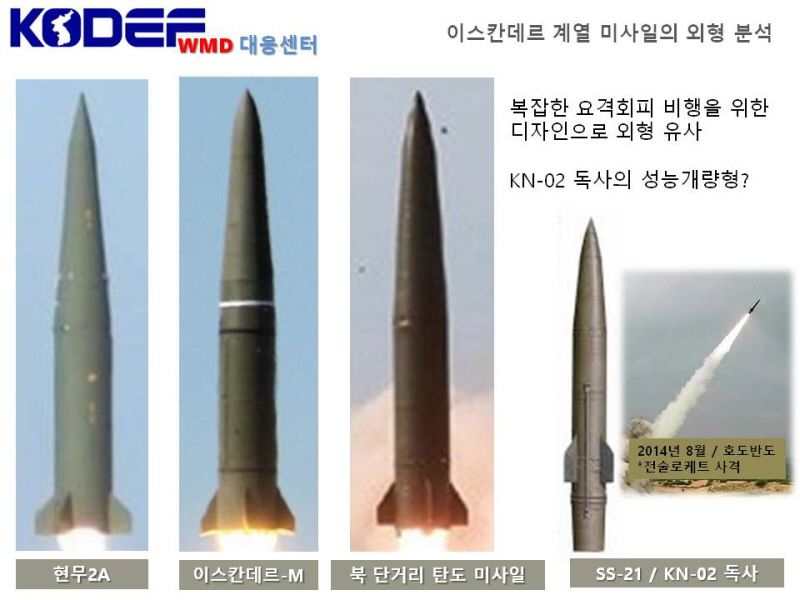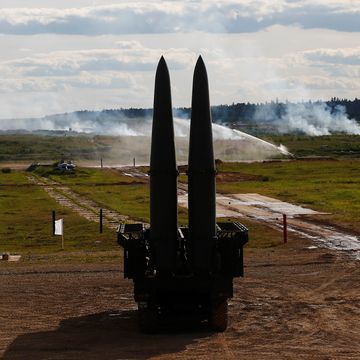North Korea has tested a new missile system, a short range ballistic missile whose exhaust plume was visible in a dramatic shot from space. Analysts believe the unnamed missile, which was first seen in public in 2018, may incorporate new features that indicate progress in the country’s missile development. Pyongyang is developing a wide variety of ballistic missiles, some of which would carry nuclear warheads, to threaten its neighbors and even the U.S.
The new missile’s launch plume was caught by Planet Labs, which operates a worldwide network of imaging satellites for commercial use. Planet’s satellites provide persistent imagery of locations around the globe on a daily basis, down to .8 meters per pixel.
That’s enough to spot a missile test plume. The plume was caught on May 4th, at 10:54 local time, on the Hodo Peninsula north of the North Korean city of Wonsan. Wonsan, located on North Korea’s east coast, is a hub for a missile and artillery weapon testing. Tracking the plume to its source, the missile was launched from a field just north of a handful of large, elongated buildings.
The image clearly tells the story. The missile was launched from a field just north of the building complex, with the largest, densest cloud still hovering directly over the field. There is little dissipation or wind drift. This suggests that Planet’s satellite captured the image mere moments after launch. The plume is pointed east northeast, the direction most North Korean missile tests are aimed.
The missile itself, according to experts, was first spotted in 2018 at a February military parade but was only tested now. The missile is so new it doesn’t appear in the Center for Strategic and International Studies’ lineup of North Korean rockets and missiles.
Here's a picture of the actual launch from the ground:
The unnamed missile appears almost identical to the Russian Iskander-M short-range ballistic missile (SRBM) and the South Korean Hyunmoo-2A SRBM. That doesn’t mean that either country assisted North Korea in developing the missile—parallel development with the same goal in mind will often result in a similar looking weapon. Nevertheless, the resemblance is striking.
According to Reuters, analysts at the Middlebury Institute of International Studies believe the new SRBM is a new solid-fuel design, part of a shift by North Korea from liquid fueled missiles to solid fueled ones. One common complaint about liquid fueled missiles is that the missiles themselves must be stored empty, as the fuel quickly corrodes onboard fuel tanks. The fueling process, which must be undertaken at the launch site, can take hours to complete--time in which the missiles are vulnerable to detection and attack. By contrast, solid fuel missiles can roll out to the launch location and are ready to fire within minutes.
In addition to being physically similar to the Iskander-M the North Korean missile also uses a transporter/erector/launch (TEL) vehicle that looks a close copy of the Russian missile’s TEL. If the missile is dimensionally similar to Iskander M, and the claim that Iskander M has a maximum range of 310 miles is accurate, this new missile is only a threat to South Korea and lacks the range to reach Japan and elsewhere. There are many U.S. facilities in South Korea within range of the new missile, including Osan and Kunsan air bases, the U.S. Army’s Camp Humphreys, and the THAAD ballistic missile defense battery located in country.
It’s also unknown what kind of warhead the new SRBM is armed with. The new missile could theoretically be equipped with a nuclear warhead, though whether Pyongyang has developed such a warhead small enough to fit on a SRBM is unknown.
Alternately, the missile could carry a high explosive or even chemical warhead—North Korea is known to have between 2,500 and 5,000 metric tons of chemical weapons on hand.

Kyle Mizokami is a writer on defense and security issues and has been at Popular Mechanics since 2015. If it involves explosions or projectiles, he's generally in favor of it. Kyle’s articles have appeared at The Daily Beast, U.S. Naval Institute News, The Diplomat, Foreign Policy, Combat Aircraft Monthly, VICE News, and others. He lives in San Francisco.
















